This Watermelon Picking Guide Will Help You End Summer On A Sweet Note

There’s nothing more refreshing on a blazing summer day than a perfectly ripe, juicy watermelon. Whether you’re slicing it up for a picnic, blending it into a smoothie or tossing cubes into a salad, getting the right fruit makes all the difference. This watermelon picking guide will walk you through the ins and outs of selecting the best melon.
How do you know which watermelon is the sweetest? Is it the one with stripes, the one with a yellow spot or the one that smells like summer? With so many shapes, colors and textures out there, it can be hard to tell. Whether you’re at a roadside farmstand or your local supermarket, get ready for your sweetest summer yet.
Summer Is Peak Watermelon Season

Whether you’re hunting for the perfect melon at a bustling farmstand or browsing supermarket bins, knowing what to look for can turn a gamble into a guaranteed win. The ripest, most flavorful watermelons typically reach their peak from mid-June through August, especially in areas with hot, sunny days and cool nights. While farmstands often sell watermelons at their absolute ripest (because they’re freshly harvested), supermarkets also carry ripe ones. You just have to be a little more discerning with your pick.
Understanding ripeness is key. Watermelons below 80% ripeness tend to be firm but not sweet—they may look pretty but taste dull and watery. A watermelon between 91% and 95% ripe is very sweet and hits the perfect balance of texture and flavor. At 100% ripeness, you’re getting the best watermelon you can buy. It’s not only sweet and juicy but also has that subtle crunch and snap when you bite in—pure summer perfection.
The Anatomy Of A Watermelon
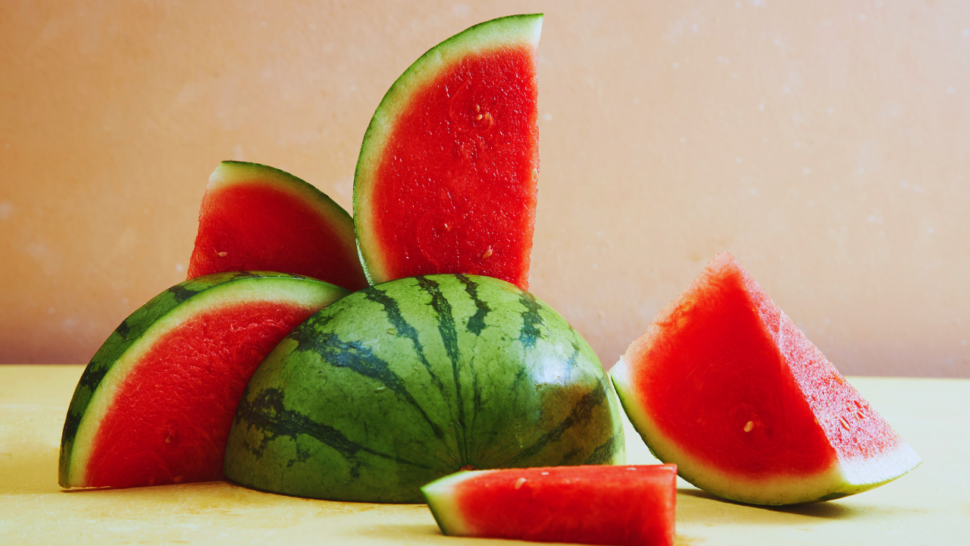
Watermelons come in a wide range of sizes—from small, single-serving “personal” melons weighing under five pounds, to extra-large giants that can weigh over 30 pounds. Shape-wise, you’ll encounter round, oval and elongated varieties. None is inherently better, but depending on the variety, each shape may vary slightly in texture and seed content.
As for flesh color, red and pink are the most familiar, but don’t count out orange and yellow watermelons. Yellow-fleshed melons tend to be a bit less sweet and more honeyed in flavor, while orange-fleshed ones can be crisp and vibrant with a citrus-like note. All are delicious, it’s just a matter of preference.
Rind patterns also vary. You’ll see solid green skins, those with classic dark-and-light green stripes and even speckled ones. While rind design doesn’t always correlate with ripeness, different varieties tend to have signature patterns. So, once you know your favorite, you’ll start to recognize it.
Then there’s the seeded vs. seedless debate. Seeded watermelons are the old-school classics with big black seeds and a slightly more complex flavor. Seedless watermelons, which were developed through hybridization (not genetic modification), are sterile and don’t produce viable seeds. They’re convenient and often sweeter, but some connoisseurs still swear by the flavor of seeded varieties.
Now that you’re primed with background info, it’s time for this watermelon buying guide to get into the nitty-gritty of melon selecting. These are the nine tried-and-true indicators for choosing the best possible watermelon this summer.
Matte Skin
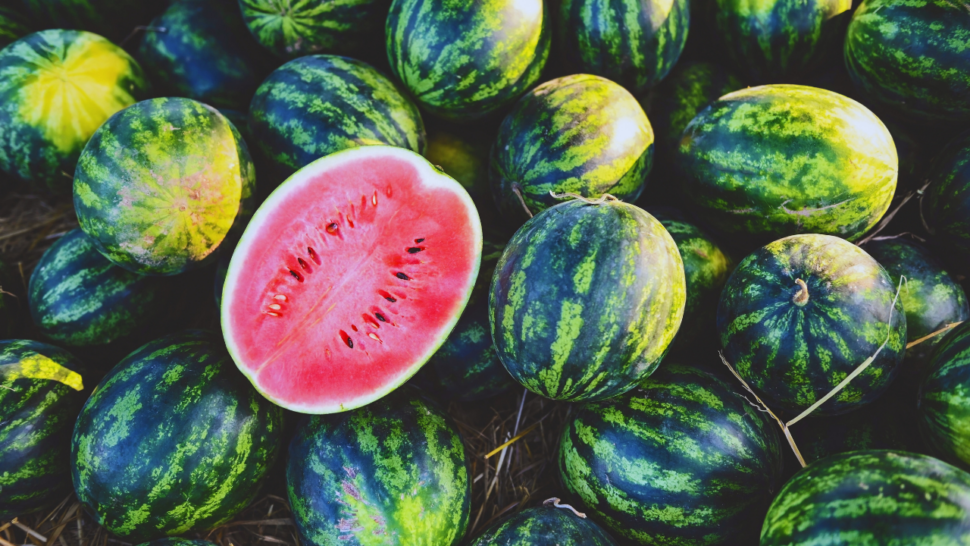
When scanning for the right watermelon, look for a skin that’s dull or matte in appearance—not shiny. A glossy watermelon might look beautiful under grocery store lights, but that shine often means it was picked before fully ripening. A matte skin usually indicates that the fruit has sat long enough on the vine to mature and develop flavor.
Full Ends
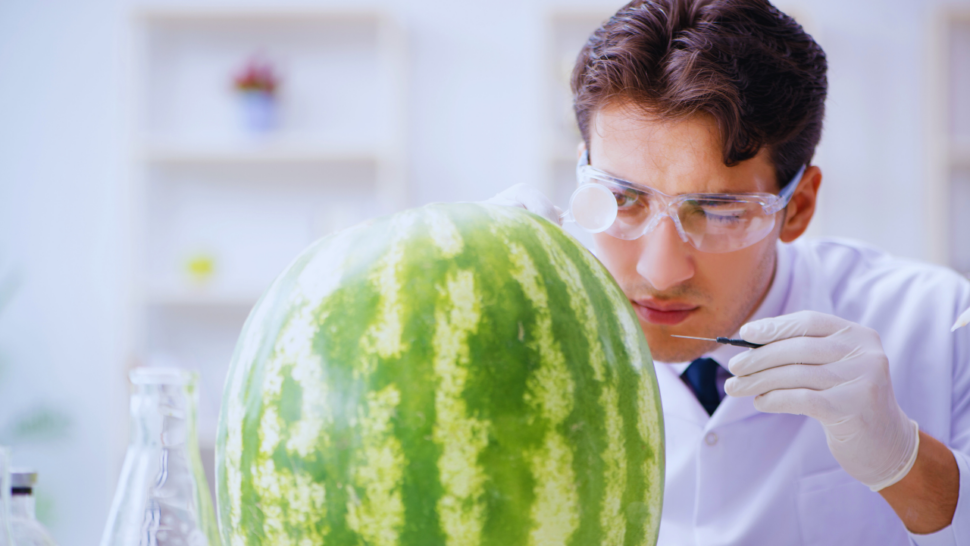
Take a look at both ends of the watermelon. A fully ripe one will have ends that appear full, rounded and symmetrical. Avoid watermelons with pointy or shriveled ends, as this can signal inconsistent growth or early harvesting, which leads to lackluster flavor.
Bouncy Sound

This is the trick your grandparents probably swore by—give it a thump. Tap the side of the melon with the palm of your hand and listen. A ripe watermelon produces a deep, hollow, resonant sound—a bit like a drum. If the sound is flat, dull or high-pitched, it may be under- or overripe.
Big Yellow Spot (The Ground Spot)
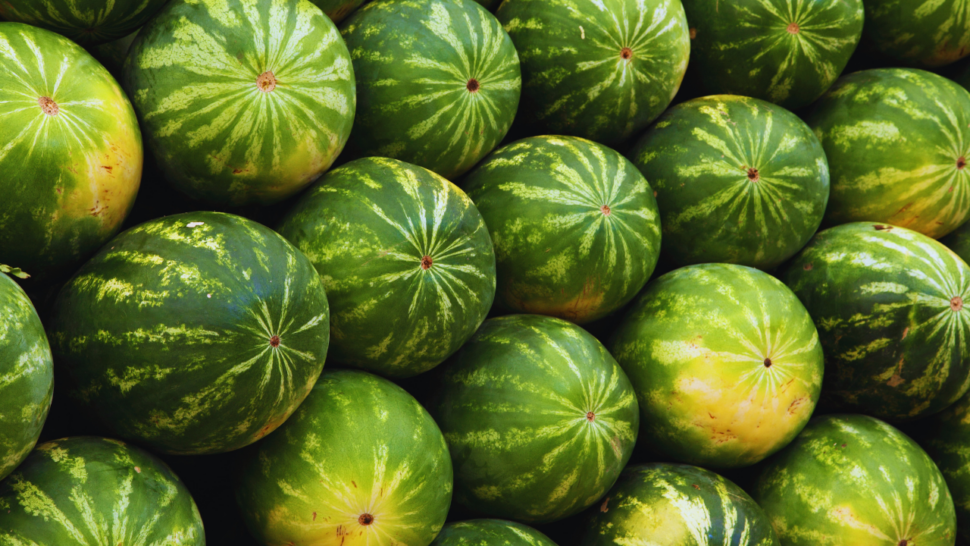
Flip that watermelon over and check for the ground spot—the area where it rested on the earth as it grew. A creamy, yellow or even orange spot means the fruit had ample time to ripen on the vine. A white or pale green spot usually means it was picked too early. The deeper and more golden the ground spot, the sweeter the fruit inside is likely to be.
Shriveled Stem
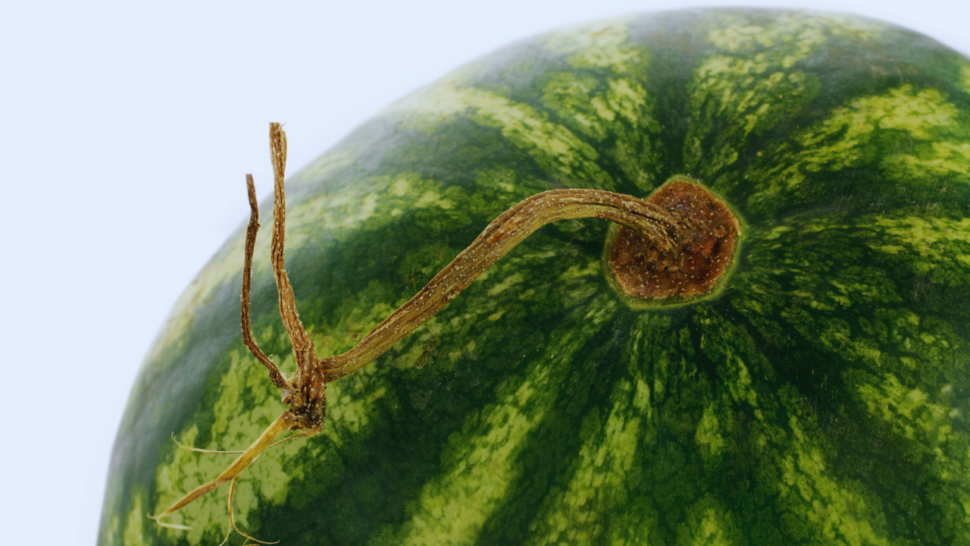
A watermelon that was allowed to fully ripen will often have a dry, shriveled, or even curly brown stem. If the stem is still green, that means the watermelon was harvested prematurely, before the sugars had a chance to fully develop. The stem tells you a lot about how long the melon stayed on the vine—and more time equals better taste.
Solid Striping
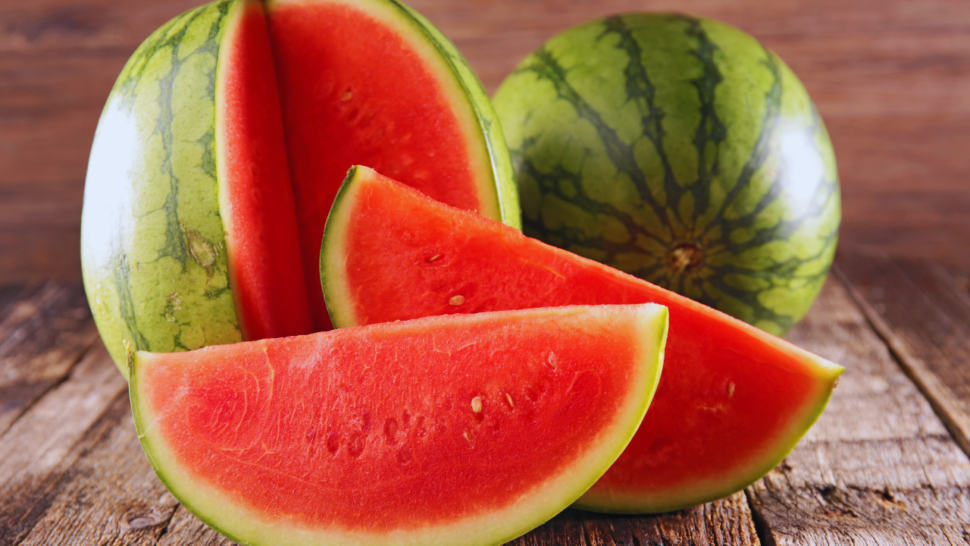
Check the stripes, if the melon has them. A ripe watermelon often has dark, consistent striping with a strong contrast between the dark and light green areas. Faint, washed-out stripes can indicate under-ripeness. In some varieties, strong striping can also correlate with higher sugar content.
Rugged Ridges
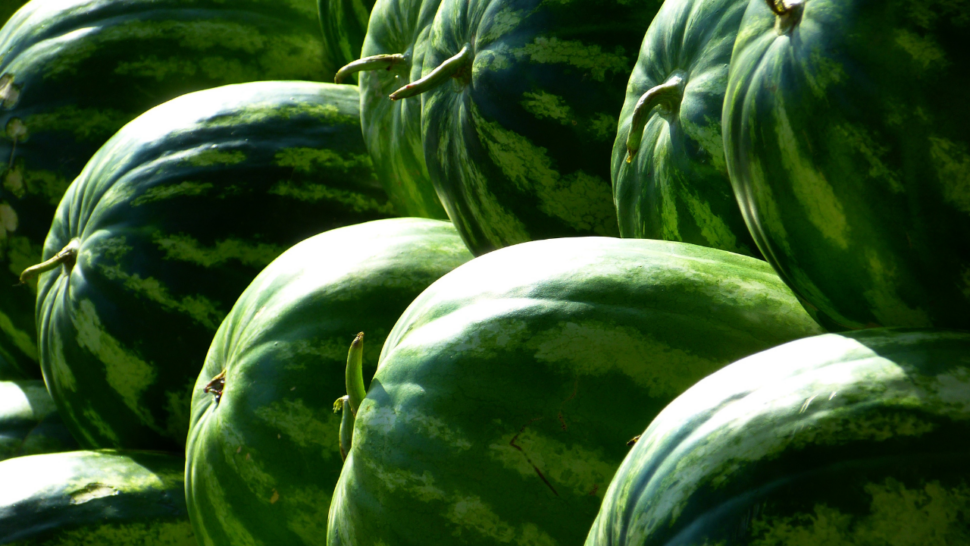
A ripe watermelon often has a firm, ridged surface with slight webbing or vein-like scars. These scars come from the melon brushing up against the vine or insects while growing. They can also be a sign that bees pollinated the flower properly—an important indicator of sweetness.
Heavy Weight
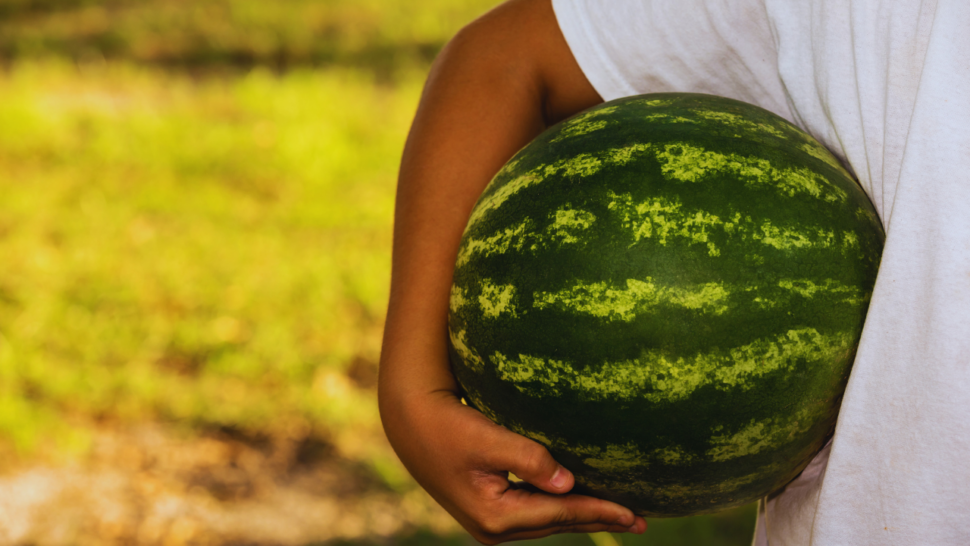
In this watermelon picking guide, we urge you to pick it up. A ripe watermelon should feel deceptively heavy for its size. That extra weight means more water—and therefore more juice. Compare watermelons of similar size and go with the one that feels heavier. It’s often the most hydrated and therefore the most flavorful.
Sugar Crystals (In Cut Watermelon)
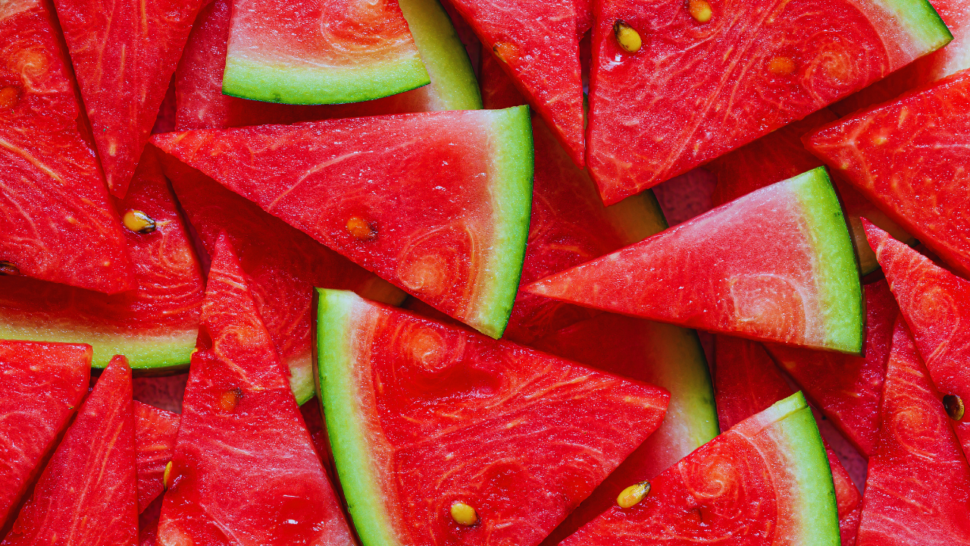
If you’re buying pre-cut watermelon chunks or halves, look for tiny white sugar crystals along the surface. These are not imperfections—they’re a sign of high sugar content and a super-sweet interior. Also, look for deep, vibrant flesh without any white streaks near the rind.
Smell/Aroma Test

No watermelon picking guide would be complete without this final test. If you’re lucky enough to be in a farmstand or market where you’re allowed to sniff the fruit, use your nose. A ripe watermelon should have a faint, sweet, musky aroma—similar to how a cantaloupe smells when it’s perfectly ripe. If it smells like nothing, it might taste like nothing, too.
So the next time you’re standing over a mountain of watermelons at your favorite local stand or grocery store, channel your inner fruit detective. Check for that golden spot, give it a knock, weigh it in your hands and sniff for that sweet perfume of summer. It’s a combination of art and science—but with this watermelon picking guide in your pocket, you’re ready to choose the best watermelon every single time.
Frequently Asked Questions
How long does a ripe watermelon last after purchase?
A whole, uncut watermelon can last 7–10 days at room temperature. Once cut, store it in the fridge and consume within 3–5 days.
Are yellow watermelons genetically modified?
No. Yellow and orange-fleshed watermelons are naturally occurring varieties developed through traditional cross-breeding, not genetic modification.
What’s the difference between seeded and seedless watermelons?
Seedless melons are hybrids that don’t produce mature seeds. They’re often sweeter and easier to eat, though some prefer the flavor of traditional seeded melons.
The post This Watermelon Picking Guide Will Help You End Summer On A Sweet Note appeared first on Travel Noire.
What's Your Reaction?
 Like
0
Like
0
 Dislike
0
Dislike
0
 Love
0
Love
0
 Funny
0
Funny
0
 Angry
0
Angry
0
 Sad
0
Sad
0
 Wow
0
Wow
0



























